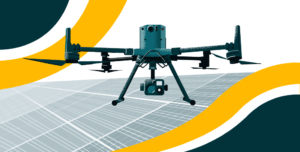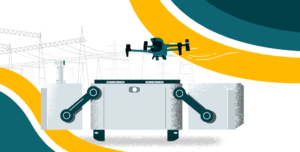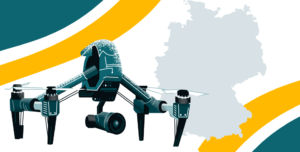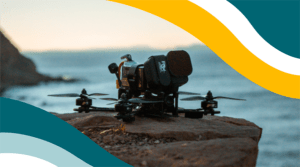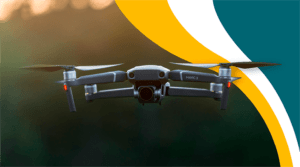Navigating the intricacies of the process to obtain a SORA authorisation can often be perceived as a challenging task, especially for those who are unfamiliar with the nuances of the Specific Operations Risk Assessment (SORA). This complexity has the potential to consume a significant amount of valuable time, even for those who are seasoned aviation professionals and are accustomed to dealing with intricate methodologies.
Obtaining SORA authorisation is crucial in ensuring that specific aviation operations are executed safely and in compliance with established regulatory standards. Whether you are a newcomer or an experienced professional in the aviation sector, the process of obtaining a SORA authorisation can be cumbersome initially.
Strategic Guidelines to Efficiently Obtain a SORA Authorisation
Having spent three years deeply immersed in the practical aspects of Specific Operations Risk Assessments (SORAs) at the Federal Office of Civil Aviation (FOCA), I’ve gleaned insights and honed strategies to streamline the process. Below, I present a carefully curated list of 10 tips aimed at ensuring you can create a robust and high-quality SORA portfolio for submission to your Civil Aviation Authority (CAA). The following tips are designed to facilitate a smooth authorization process and save you valuable time:
- Implement a versioning and document management system,
- Clarify definitions,
- Assess readiness to fulfill requirements,
- Evaluate adjacent airspaces and areas,
- Analyze air and ground risk,
- Detail mitigation strategies,
- Specify assurance and integrity levels,
- Include a self-declaration,
- Avoid over-documentation,
- Manage and document changes effectively.
By sticking to these tips, you can ensure that your efforts to obtain a SORA authorisation are both efficient and successful.
SORA Authorisation – Versioning and Document Management System
Before creating numerous documents for a SORA authorisation, it’s vital to establish a system for precise versioning. Documents often undergo changes, and without proper management, identifying the correct version can become confusing for both you and the relevant authorities.
To simplify this, make a Master Data List detailing all documents related to your submission, including their versions, dates, and a consistent name for each of those. Your application should minimally consist of an application form, your Operations Manual, and the SORA. Additional documents, either standalone or as part of your Operations Manual, may be required, depending on the Specific Assurance and Integrity Level (SAIL) you have.
Clarifying Definitions of SORA Authorisation
Before delving into the specifics of air risk, ground risk, Operational Safety Objectives (OSOs), mitigations, and adjacent airspaces for SORA authorisation, it’s essential to comprehend the underlying definitions and concepts:
- VLOS, EVLOS, BVLOS. Understand what these acronyms mean for pilots and crew: Visual Line of Sight (VLOS), Beyond Visual Line of Sight (BVLOS), and Extended Visual Line of Sight (EVLOS). Familiarize yourself with how these terms impact operations.
- Flight geography, ground risk buffer, and contingency volume. Grasp the definitions and implications of these terms in the context of SORA and their interrelations. Define these terms as they pertain to your operations and establish corresponding procedures.
- Adjacent areas and airspaces. Comprehend how these spaces are connected to the ground risk buffer. Different Civil Aviation Authorities (CAAs) may have varying interpretations, with some considering only neighboring spaces while others include all areas a drone could enter in case of a fly-away. Ensure clarity on this concept for your operations.
- Assurance and integrity. Understand the distinction and connection between these two elements, as they form the basis of any requirement. Integrity outlines what is needed, while assurance dictates the method of proof.
By ensuring a thorough understanding of these definitions and concepts, you’ll be better prepared to navigate the process of obtaining SORA authorisation.

Assessing Your Readiness to Meet Requirements
Contrary to the common perception that SORA is a methodology specific to a particular location, the requirements you are prepared to meet actually determine your operation’s acceptable ground and air risk. Understanding the SAIL (Specific Assurance and Integrity Level) is crucial in this context.
SAIL corresponds to the operational and technical requirements for a given operation. The higher the SAIL level, the more detailed the requirements. For instance, if your ground and air risk analysis results in a SAIL of IV, V, or VI, it is essential to evaluate whether your company is prepared to undergo a potentially lengthy and expensive aviation certification process. Alternatively, you may need to reassess your operational location to lower the associated SAIL requirements.
Importance of Analyzing Adjacent Airspaces and Areas
For operations classified under low to medium Specific Assurance and Integrity Levels (SAILs), the SORA is designed to assess risks that are locally medium or low. It is imperative to show that your operation can maintain this level of risk within the designated operational volume. A critical yet often overlooked step in this process is the analysis of adjacent airspaces and areas (Step 9 in the SORA process).
This step holds significant weight for your Civil Aviation Authority (CAA) as it informs both you and the authority about the design requirements based on risk that are necessary for your operation. The goal is to prevent flyaways and ensure that your operation is airworthy for low to medium-risk scenarios (SAIL I to IV).
Assessing Air and Ground Risk
To operate at medium or low Specific Assurance and Integrity Levels (SAILs), selecting a location with corresponding air and ground risks is crucial. To make an informed choice, it’s important to comprehend the definitions of populated or sparsely populated areas within the jurisdiction of your intended operations and understand how the local Civil Aviation Authority (CAA) interprets these terms.
Assessing air risk can be complex, thanks to the variety of airspace users. It’s vital to meticulously examine the situation in local airspace, taking into account all elements such as Control Zones (CTR), Terminal Maneuvering Areas (TMA), aerodromes, gliders, heliports, and Helicopter Emergency Medical Services.
Remember, if you plan to fly higher than 500 ft Above Ground Level (AGL) in uncontrolled airspace, this situation falls into Air Risk Class C and consequently requires adherence to SAIL IV. By thoroughly assessing both air and ground risks, you can strategically position your operation to successfully obtain a SORA authorisation.
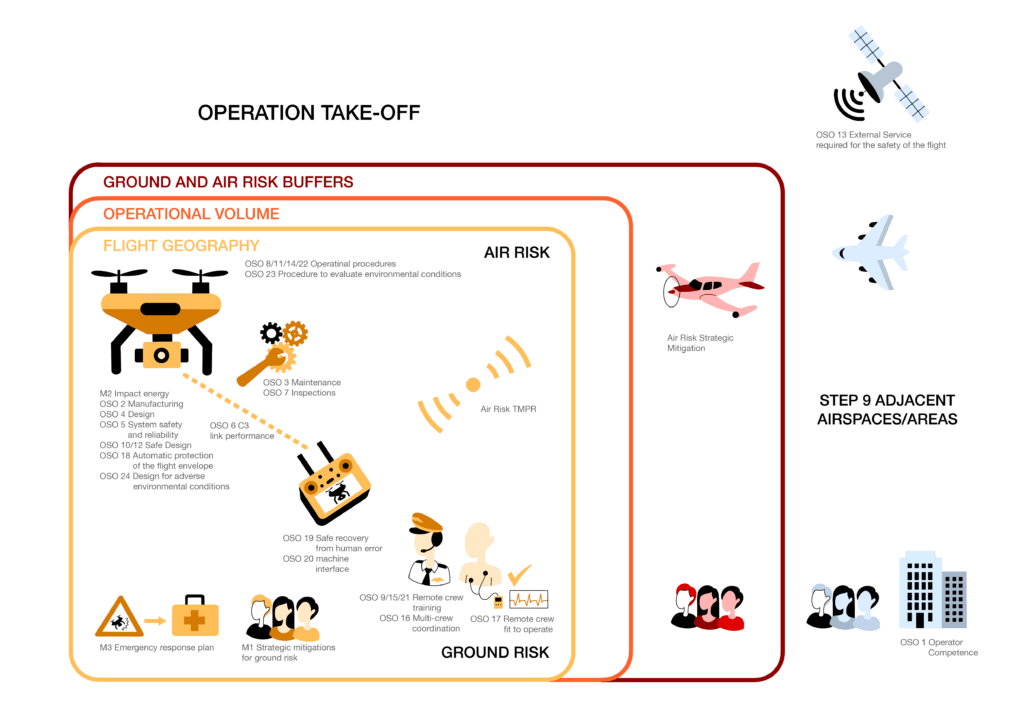
Navigating the Use of Mitigations
Employing mitigations, such as M1, can be appealing as a means to reduce your Specific Assurance and Integrity Level (SAIL). However, it’s important to remember that these mitigations represent a significant risk reduction and must be meticulously substantiated. Additionally, they may not be suitable for every situation.
To effectively demonstrate the efficacy of your ground risk and tactical mitigations, using a compliance matrix can be beneficial. This matrix is a table that outlines the robustness level, the corresponding requirements found in the SORA Annexes, and your means of compliance. By providing a clear and organized representation of this information, the compliance matrix can simplify the evaluation process for the Civil Aviation Authority (CAA).
The Specific Assurance and Integrity Level
Navigating through the SORA requirements through the Operational Safety Objectives (OSOs) Table can initially appear overwhelming, and meeting these requirements might seem daunting. However, this step is fundamental to the SORA process as it addresses various technical and organizational requirements, including organizational structure, training, maintenance, procedures, human errors, checklists, and external systems.
If certain requirements are unclear, seeking professional aviation support is advisable. Companies like UASolutions offer tailored support to help understand and comply with these requirements. For those who do not wish to build their drones to specific standards and prefer to operate at lower SAILs, it is crucial to ensure you can meet the requirements at these levels, which may also be complex. Utilizing a compliance matrix system to demonstrate adherence to the OSOs can be an effective strategy in this context.

Understanding the Nuances of Self-Declaration
There’s a common perception that a low robustness level is always self-declared. Still, this is not universally true and depends on the specific requirement and the assurance robustness level associated with it. The SORA does not explicitly state that all low robustness level items can be self-declared.
Examining the details in documents such as SORA Annex B or Annex E reveals that several low robustness level Operational Safety Objectives (OSOs), such as OSO 20 or OSO 3, do not permit self-declared assurance. Additionally, self-declaration carries legal implications, making it imperative to ensure full compliance with a requirement before choosing to self-declare.
Avoiding Over-Documentation
Securing SORA authorisation is just the start of the journey. Post-authorisation, it’s vital to maintain compliance with the documentation while the life cycle of the operation lasts, preparing for potential audits and incidents.While it’s important for operations to align with the Operational Manual (OM) and SORA, ensure your documentation is clear, concise, and easily implemented by the crew. Overcomplicating documentation by exceeding requirements can lead to unnecessary costs and administrative burdens. The key is to keep your documentation simple and straightforward while aiming to uphold SORA authorisation.

Managing Changes Effectively
Changes in aspects such as locations, UAS, and firmware are common and should be anticipated when preparing your documentation. It’s essential to approach these changes in an organized way to ensure that your Operational Manual (OM) and SORA authorisation accurately represent your operations. Additionally, regulatory changes may occur, so staying current with the latest updates to EASA drone regulations is crucial to keeping your documentation relevant and compliant.
